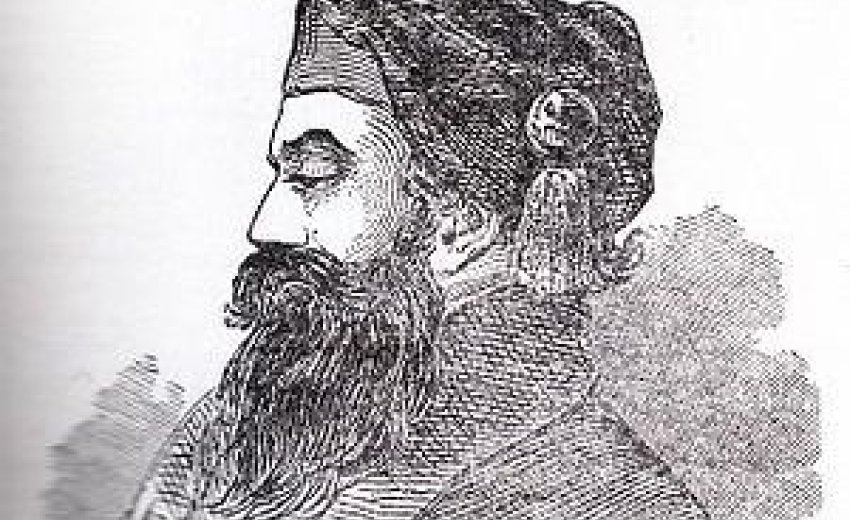COINCIDENCE or design? Paris appears to be taken by surprise this season by an unusual and simultaneous wave of expositions concerning the subcontinent.
The Yves St Laurent Foundation devoted its exhibition hall to a collection of apparels favoured by the maharajas of yore while the Quai Branly Museum on the Left Bank, practically under the Eiffel Tower’s shadow, is hosting through July 18 a mighty show called ‘The Other Masters of India’ with paintings, sculptures and tapestries representing the indigenous art of India created mainly by members of the Adivasi tribal groups.
Not to be left behind, the Alliance Française of Pakistan is the force behind a series of events lasting four weeks that include film documentaries, puppet shows, photographs, music and dance evenings as well as the screenings of three full-length movies: Jago Hua Savera (A. J. Kardar, 1959), Khamosh Pani (Sabiha Sumar, 2003) and A Mighty Heart (Michael Winterbottom/ 2007) at MacMahon, the most prestigious of cinéma d’art theatres in the French capital, situated next to the Arc de Triomphe.
And that’s not all. The Guimet Museum that specialises in the Oriental heritage is hosting another show called ‘Pakistan, the Land of Encounters’, with statues, jewellery, coins, carved masonry pieces, stonework façades and other artifacts representing the Gandhara civilisation; the exhibits are on loan from the Taxila and many other national museums of Pakistan. Hopefully, this time everything will return home safely once the exhibition is over.
We are informed at the museum that the earliest finds from the Gandhara sites date back to 1830 when Maharaja Ranjit Singh, who briefly ruled the roost in the north-western part of what is today Pakistan from the capital Lahore of his Punjab kingdom, authorised Gen Jean-Baptiste Ventura, a French officer in his army, to begin excavations at the Manikyala stupa in the region that still conceals many unearthed relics of the civilisation founded by Alexander the Great, a civilisation that would later turn Buddhist. Which brings us to our story of the day.

Jean-Baptiste(originally Giovanni-Battista Rubino) Ventura was born in Modena, Italy, in 1794. At age 18 he was still a wayward youth not knowing what to do with his life; but he later began showing qualities of an inspired officer when he joined Napoleon’s army and quickly rose in rank. Following the debacle of Waterloo in 1815, he returned home to Italy for a while then wandered off eastwards to Constantinople, at heart feeling more French than Italian and seeking adventure and good fortune.
These came three years later when he was enlisted as an officer in the Persian army with the task of training the shah’s men in European methods of warfare. When the shah died in 1822, Ventura, following a conspiracy by a group of English officers in the Persian army, was dismissed. This strengthened his resolve to seek revenge and, in the company of another French officer Jean-François Allard who had been meted out similar treatment by the British, Ventura moved further east, to end up finally with the army of Maharaja Ranjit Singh of Punjab.
Their qualities soon helped Ventura and Allard hold commanding positions in the battle of Nowshera that was fought in March 1823 by the forces of Pakhtun tribesmen against the army of Ranjit Singh. The battle was a decisive victory for the maharaja’s army and led to the occupation of the Peshawar valley as well as to the capture of the city of Peshawar itself. Later Ventura, now a general at the head of a special force called Fauj-i-Khas, would successfully conduct a number of campaigns that would help him further expand the boundaries of his employer’s kingdom and to modernise his army.

The maharaja was so impressed with Ventura’s performance, and by no small measure with his anti-British ire, that the French general was soon awarded additional special civilian powers as a qazi and as the governor of Lahore.
Political and military power, a privileged lifestyle, his marriage to an Indian lady and the birth of children, then relative peace would also provide Ventura with enough spare time to indulge in his newly found passion for exhuming coins and other objets d’art from the hitherto unknown Greco-Buddhist stupa sites around Peshawar and the Khyber pass.
At the same time Jean-François Allard, who was almost 10 years older than Ventura and was already an officer in Napoleon’s army where he was awarded the Légion d’honneur for acts of bravery, followed his own course of progress. His few years of experience in the shah’s army had allowed him to be fluent in Persian and he was able to write poetry in that language.
Following the battle of Nowshera, Allard too was promoted to the rank of general by the maharaja. Like Ventura, he was married to an Indian lady and liked to dress as an Indian, turban and all. Despite this, he always expressed his wish to move to the Mediterranean city of St Tropez in France where he was born, once the maharaja granted him his retirement. He made several trips to France to prepare for this, but each time returned to Lahore.
As every interesting story has its surprising paradox, it was Ventura who believed he would die in India which he loved and never wanted to leave; but it was Gen Allard who died there at age 54, a few months following the death of Ranjit Singh in 1839. Gen Ventura, now 45, remained in the service of three of the maharaja’s successors, finally retiring and moving to Paris where he presented King Louis Philippe with a collection of Greek gold coins that he had unearthed at Gandhara. A prosperous man, he lived comfortably in the French capital for the rest of his life.
Gurinder Singh Mann
Content Editor
www.sikhnugget.com
[email protected]

